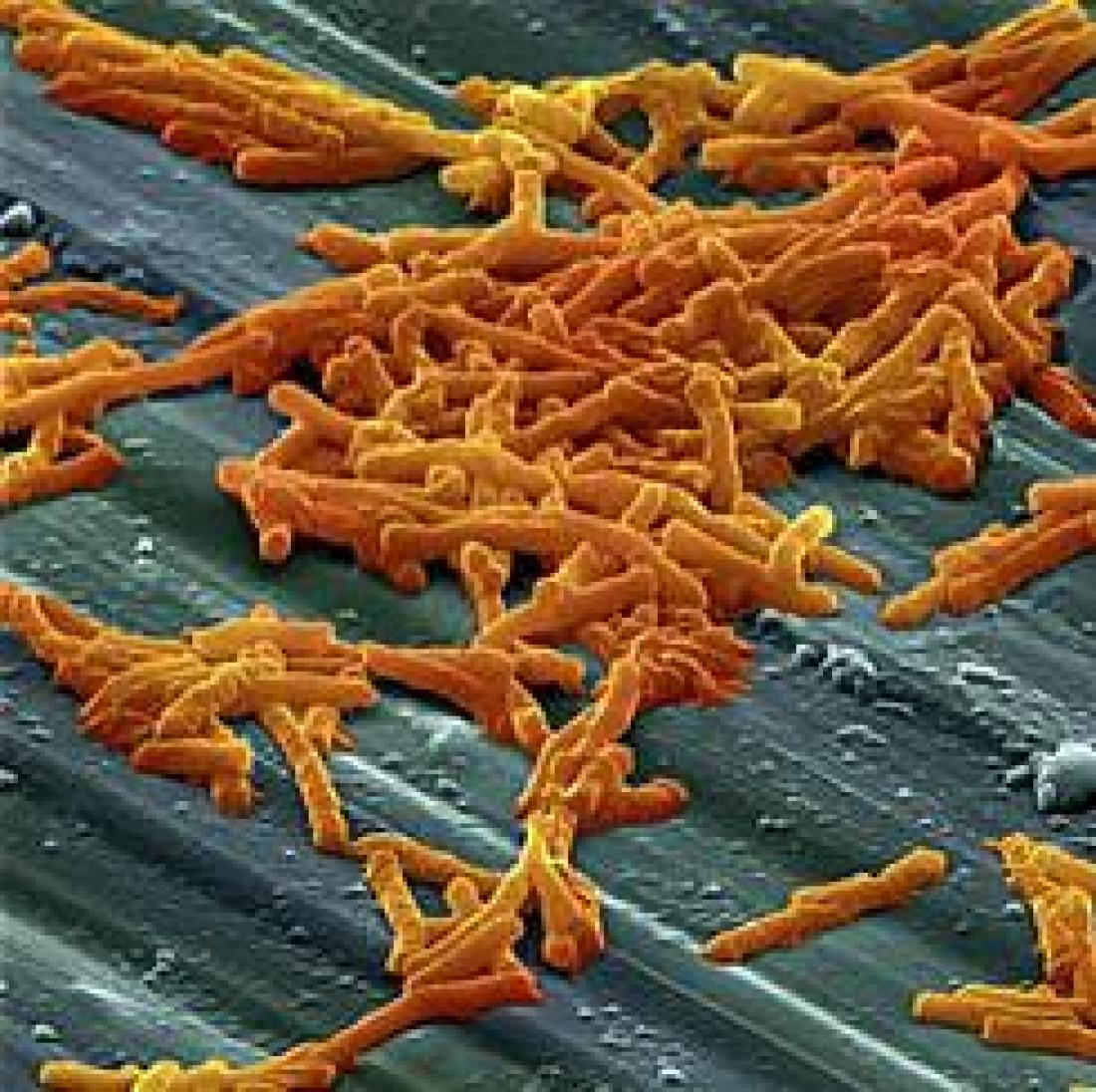Clostridium difficile spores
The paper, by Y. Y. Loong and colleagues at the Universiti Putra Malysia, examines the epidemiology, immune responses, symptoms and diagnosis of C. difficile infections (CDI). It also discusses antibiotic susceptibility, CDI recurrences, probiotics and other alternative treatments.
C. difficile is an opportunistic pathogen found in the intestines of approximately 3% of healthy adults and 40% of infants. The bacterium causes a spectrum of diseases in humans, ranging from mild to severe. Infection rates are particularly high in North America and European countries. Studies have shown that this bacterium is responsible for 10-25% of antibiotic-associated diarrhoea cases, 50-75% of antibiotic-associated colitis cases, and 90-100% of antibiotic-associated pseudomembranous colitis, respectively.
The antibiotics metronidazole and vancomycin have been recommended as the treatments of choice for C. difficile infections since the 1990s. However, there is a high risk that CDI will recur after several days of antibiotic administration. Metronidazole-resistant C. difficile also needs to be considered during treatment. Thus, a re-evaluation of the use of metronidazole as the first-line treatment is needed in areas with high resistant rates, comment Y. Y. Loong and colleagues.
Probiotics – beneficial microorganisms deliberately introduced into the body – have been used in some patients as an adjunct treatment with some success. However, a detailed investigation on the use of probiotics for infected patients is still needed to determine their real efficacy, recommend the authors. In addition, scientists need to explore new types of probiotics. “This will enable physicians to choose from a wider range of probiotics and develop a better combination to be used as adjunct treatments.”
For more information about each research, please contact:
Y. Y. Loong
Department of Medicine, Faculty of Medicine and Health Sciences
Universiti Putra Malaysia
43400, Serdang, Selangor, Malaysia
Email: [email protected]
Tel: +(603) 8947 2729; Mobile: +(6) 016 285 2590.
About Pertanika Journal of Science & Technology (JST)
Pertanika Journal of Science & Technology (JST) is published by Universiti Putra Malaysia in English and is open to authors around the world regardless of nationality. Currently, it is published twice a year in January and July. Other Pertanika series include Pertanika Journal of Tropical Agricultural Science (JTAS), and Pertanika Journal of Social Sciences & Humanities (JSSH).
Pertanika Journal of Science & Technology aims to provide a forum for high quality research related to science and engineering research. Areas relevant to the scope of the journal include: bioinformatics, bioscience, biotechnology and bio-molecular sciences, chemistry, computer science, ecology, engineering, engineering design, environmental control and management, mathematics and statistics, medicine and health sciences, nanotechnology, physics, safety and emergency management, and related fields of study.
For more information about the journal, contact:
The Chief Executive Editor (UPM Journals)
Head, Journal Division, UPM Press
Office of the Deputy Vice Chancellor (R&I)
IDEA Tower 2, UPM-MDTC Technology Centre
Universiti Putra Malaysia
43400 Serdang, Selangor
Malaysia.
Phone: +(603) 8947 1622 | +(6016) 217 4050
Email: [email protected]
__________________________________________
Acknowledgements
The Chief Executive Editor, UPM Journals



